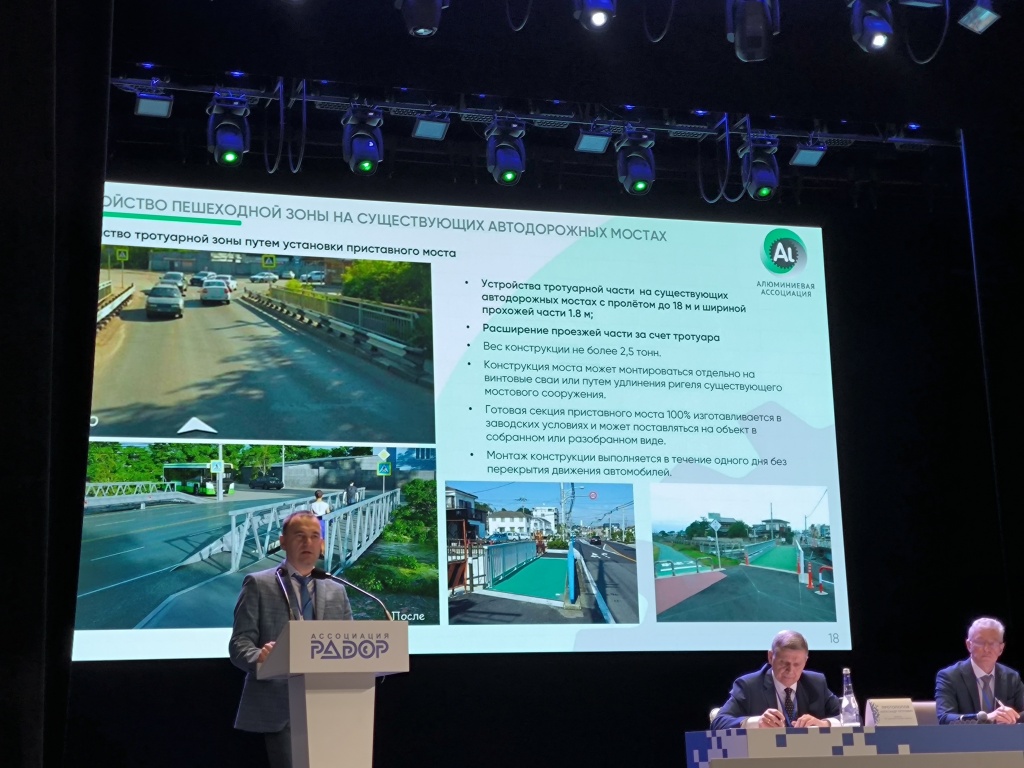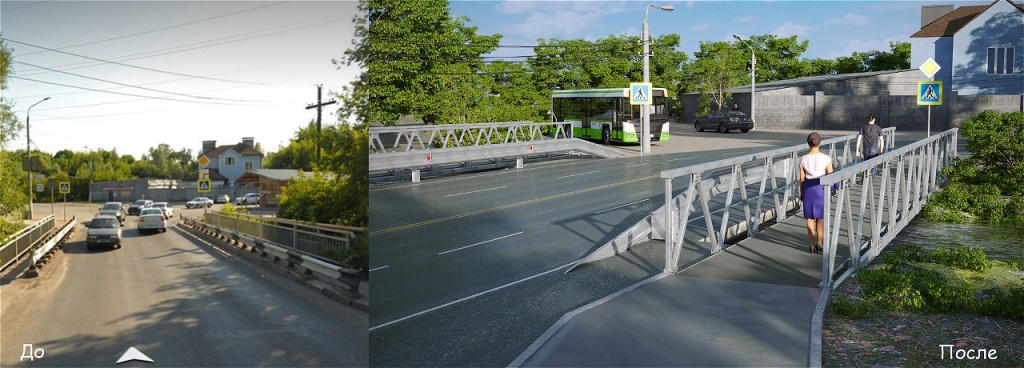15.04.2024 - Aluminium Association

Aluminium alloy attached bridges can solve the problem of rebuilding existing road bridges and expanding their roadway by incorporating sidewalks. Oleg Maslov, Head of the Transport Infrastructure Department of the Aluminium Association, stated this at the 20th annual conference of the RADOR Association, which focused on advanced technologies for the construction, repair, and maintenance of motorways. The conference was attended by representatives of the Ministry of Transport of the Russian Federation, the Federal Road Agency, the Avtodor Group, manufacturers of road equipment, materials, and tools, as well as experts from science and education circles.
Currently, one of the goals of the 'Road Safety' federal project is to prevent accident hotbeds and increase satisfaction with road safety. To achieve this, the Association proposes implementing a technology for creating pedestrian zones on existing road bridges that do not have sidewalks or whose sidewalks are in a poor state.
To meet regulatory requirements, the Aluminium Association offers to install sidewalk zones on existing road bridges with a span of up to 18 meters and a sidewalk width of 1.5 metres (increments of 0.75 m). The sidewalk zone will be constructed by replacing the deteriorated parts of the end beams with an aluminium alloy attached bridge.
The technology offers the following advantages:
- the bridge structure can be installed in two ways: either separately on helical piles or by extending the cross beam of an existing bridge;
- no land allocation is required;
- the structure weighs no more than 2.5 metric tonnes;
- installation takes only one day without affecting traffic;
- no design documentation or government expert review is required;
- premade sections of the attached bridge are 100% produced in the factory and can be delivered to the site either assembled or disassembled;
- the structure requires no ongoing maintenance thanks to its material
The attached bridges designed by the project team of the Aluminium Association are fully produced at the factory and can be delivered to the site in pre-assembled form. The structure weighs up to 2.5 tonnes. Installation is done in one day without interrupting traffic. The roadway is extended at the expense of the existing sidewalk. The attached bridges can be installed either on helical piles or by extending the crossbar of an existing bridge superstructure. Due to the light weight of the structure, installing it only requires a light crane. Moreover, the structures can be transported using low-tonnage cargo vehicles.
The Aluminium Association is actively working on developing road infrastructure. Every year, the number of bridges built in Russia using aluminium alloys increases. As of now, more than 18 bridge superstructures have been put into operation. More than 70 bridges are in various stages of construction. This includes projects for exported pedestrian bridges, which are in high demand abroad due to their unique features. In late December 2023, the first road bridge in Russia constructed using advanced technologies and new materials was opened to traffic. The 72-metre-long bridge over the Linda River was constructed on the Tolokontsevo-Mogiltsy motorway in the Bor district of the Nizhny Novgorod region. The superstructure beams and orthotropic plates are made entirely of aluminium alloys, which is a groundbreaking innovation in bridge construction in Russia.
'Since 2017, the Russian aluminium industry has gained significant expertise in building and operating various types of bridges, in addition to standard pedestrian crossings. These include bridges over railway tracks, cable-stayed bridges, structures with observation decks, pre-fabricated bridge kits, and road bridges. We are confident that the new type of bridges will be especially popular in areas and places with narrow passages where traffic slows down even with a relatively small number of cars,' said Oleg Maslov.


